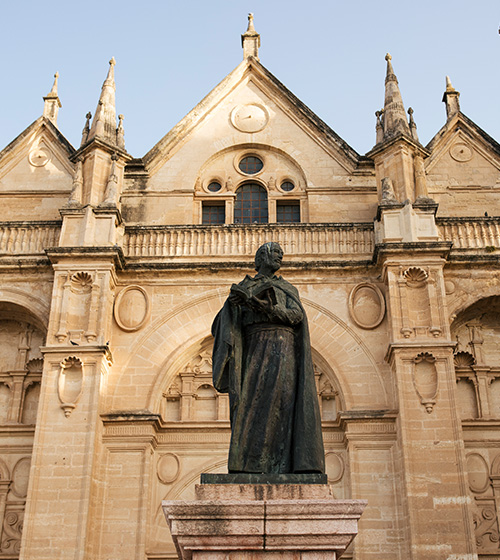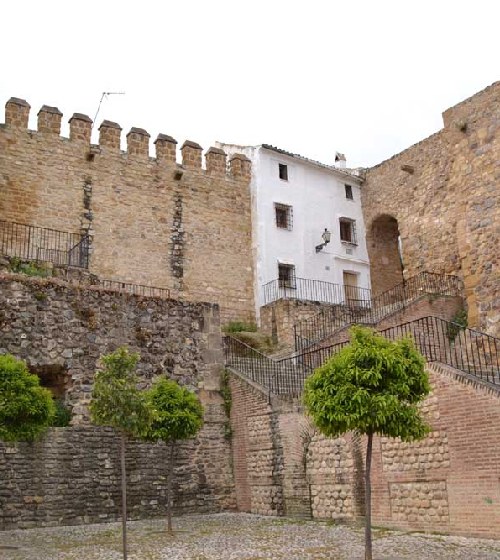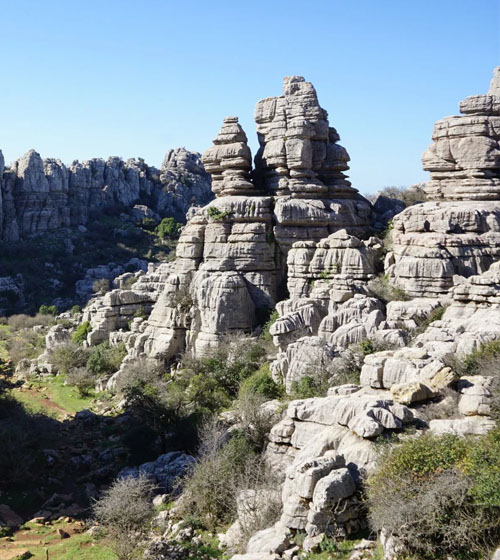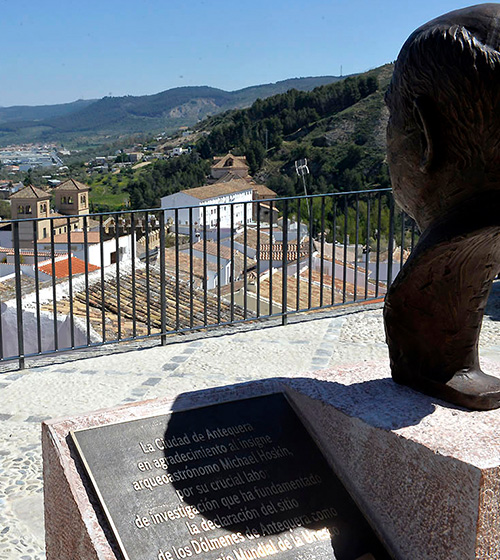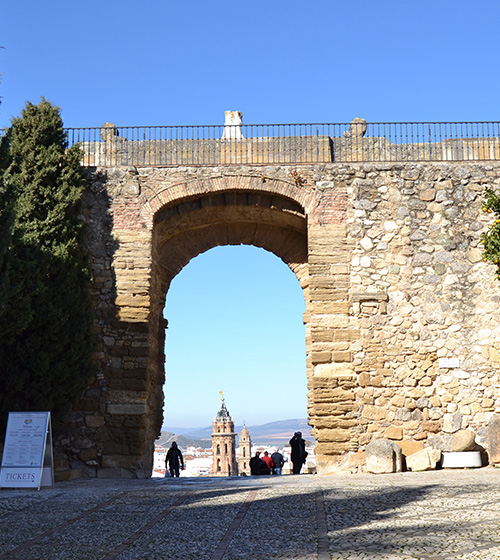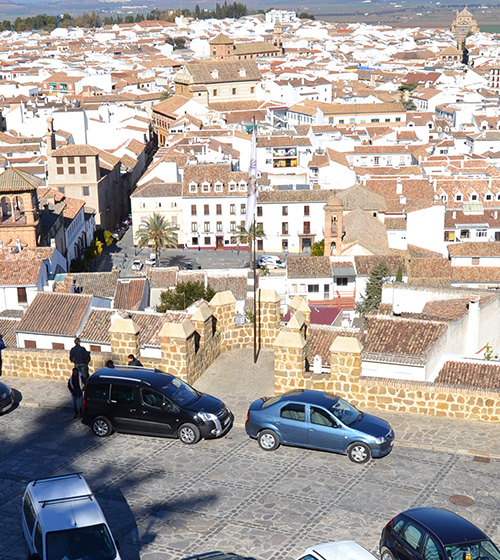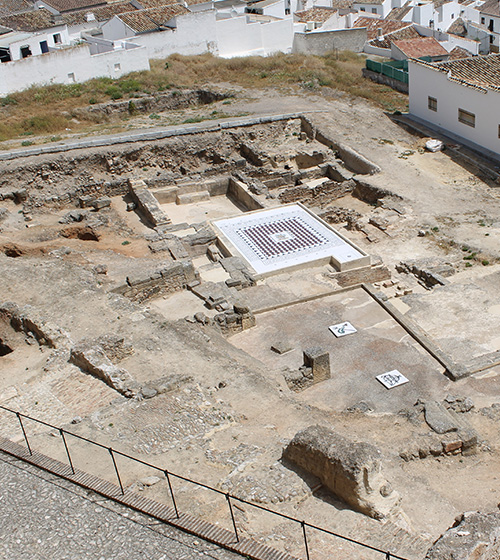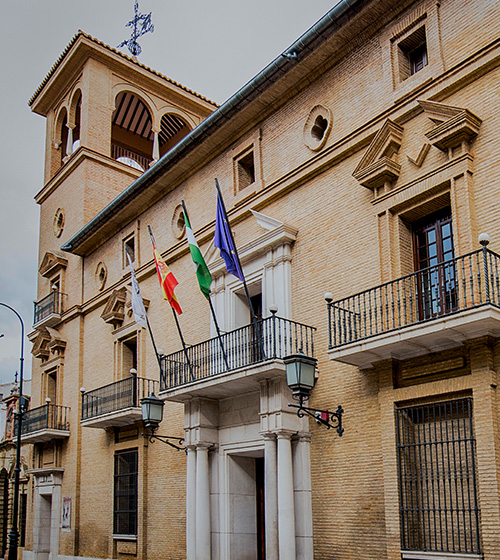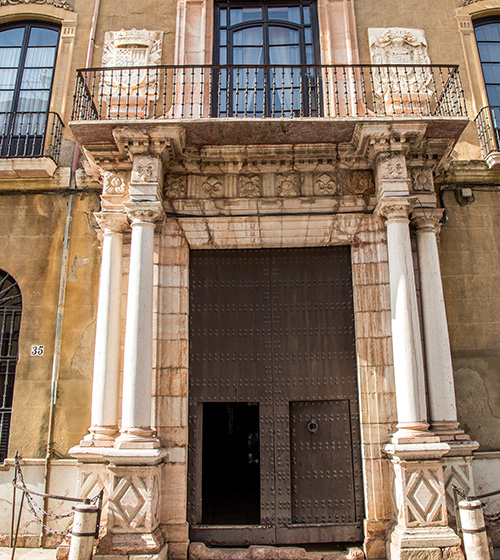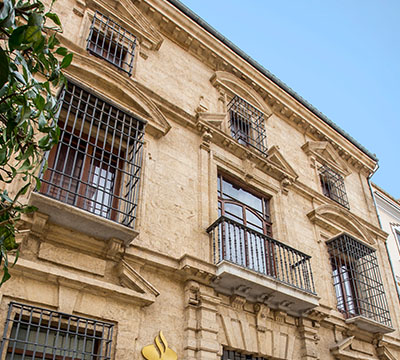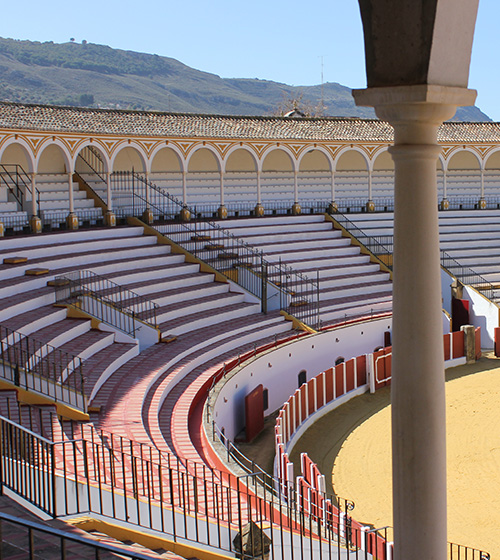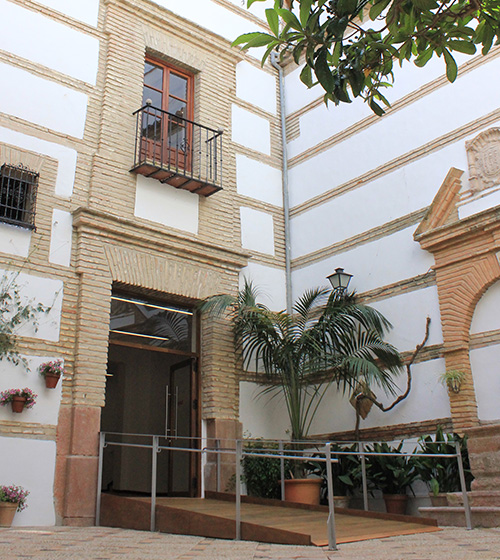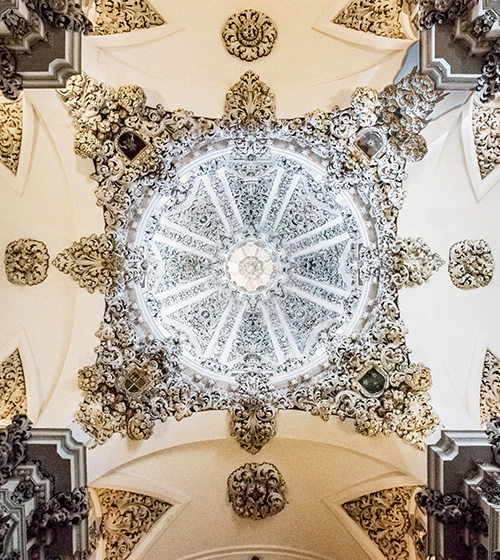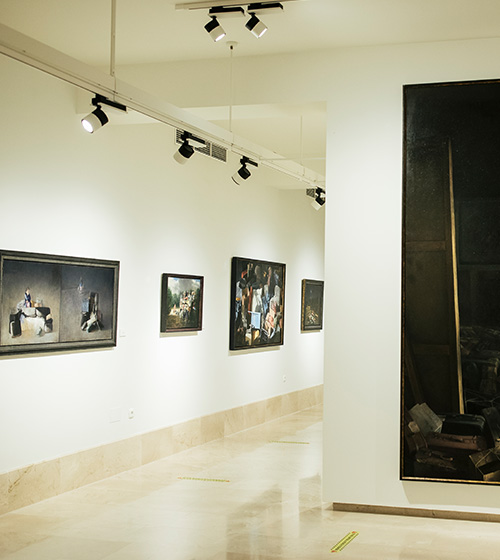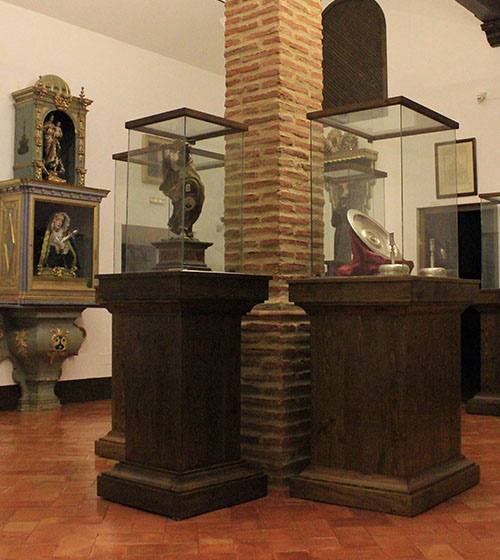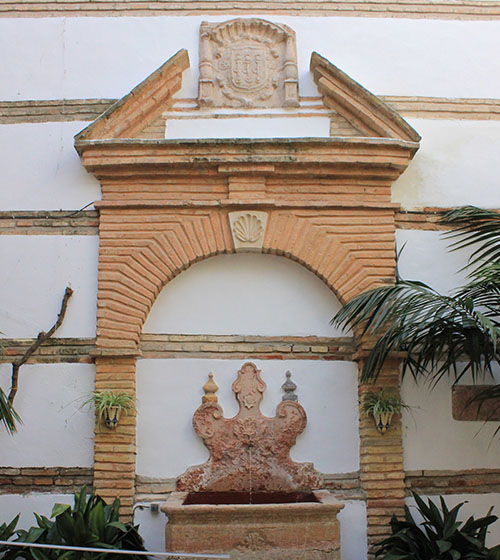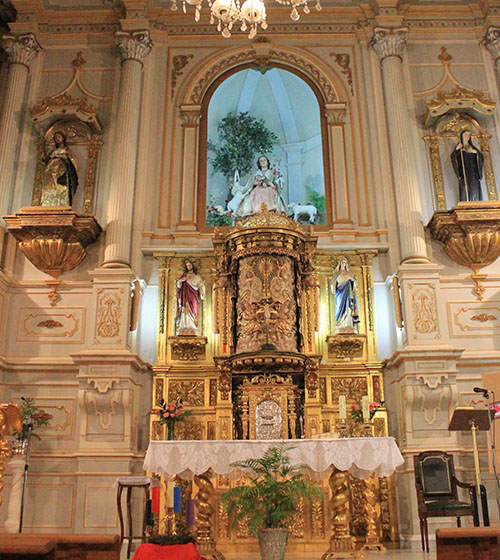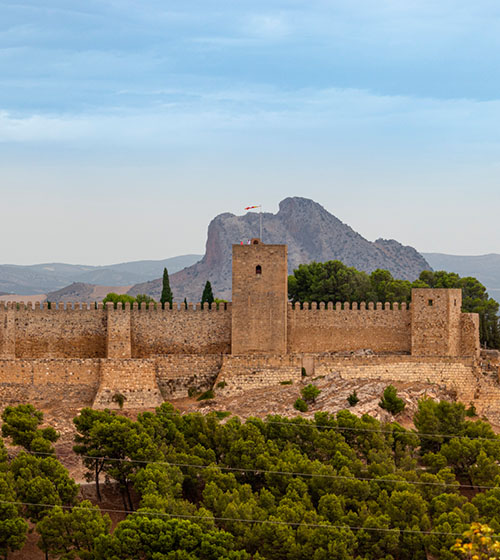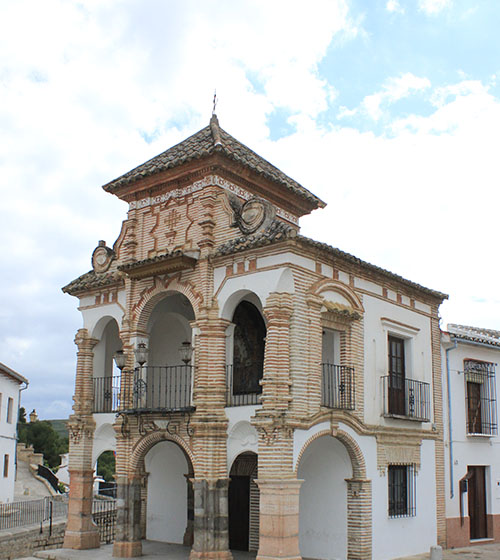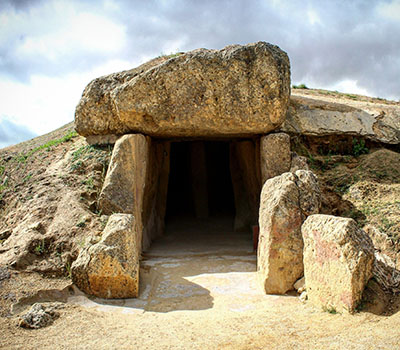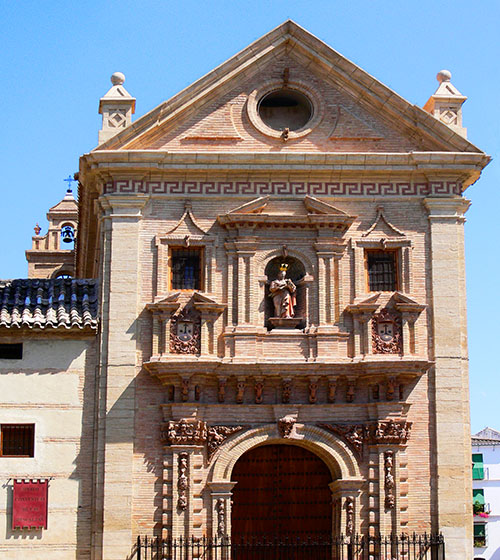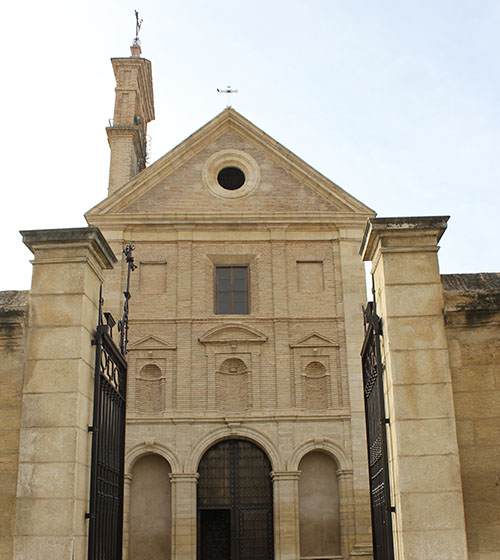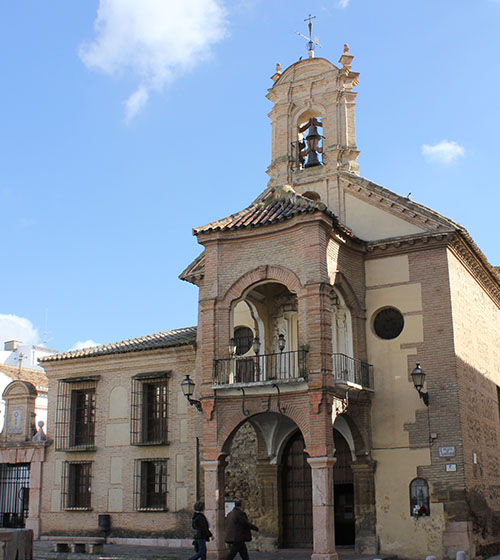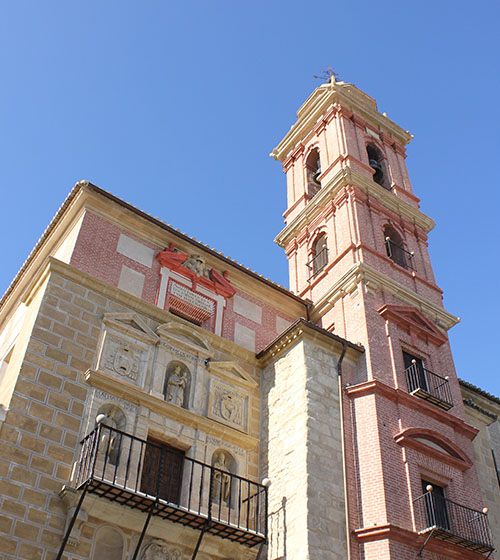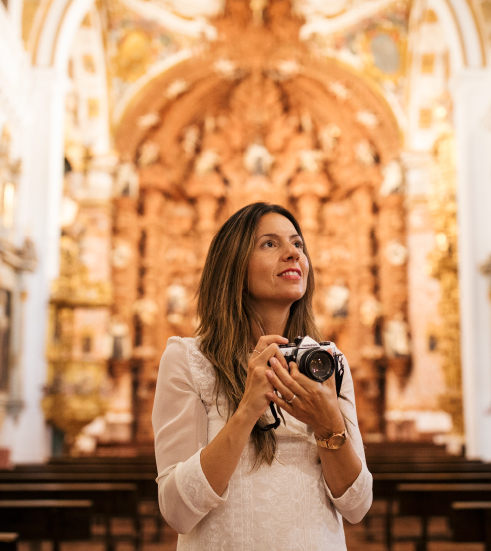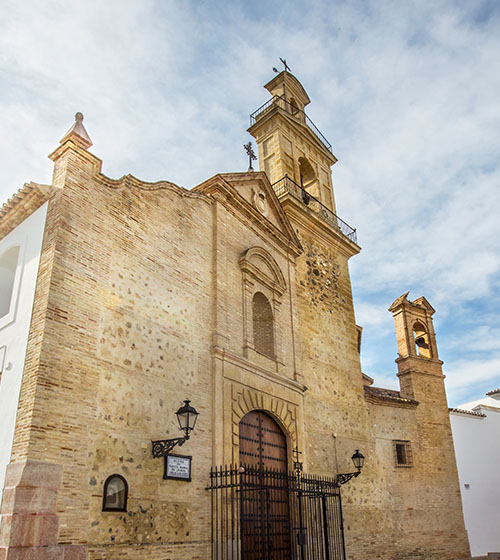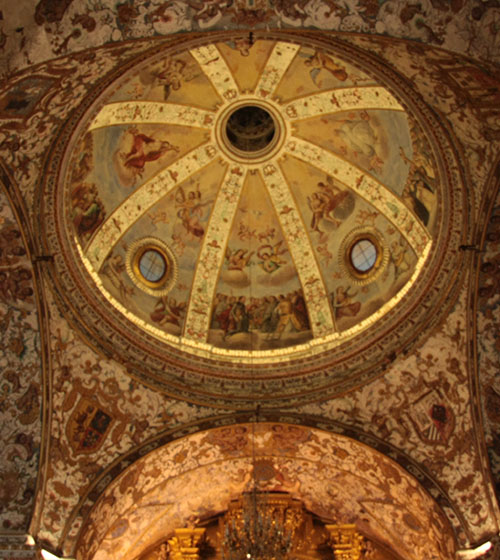Route first day:
Archaeological Ensemble Los Dolmenes de Antequera – Plaza de Santiago and Parish Church of Santiago – Convent of Belén – Church of San José – Convent Museum – Church of El Carmen – Postigo de la Estrella – Roman Baths – Royal Collegiate Church of Santa María la Mayor – Monumental Site of the Alcazaba – Viewpoint Michael Hoskin – Arch of the Giants – Viewpoint of the Almenillas – Church of Santa María de Jesús – Chapel Tribuna Chapel María la Mayor – Monumental Enclosure of the Alcazaba – Mirador Michael Hoskin – Arch of the Giants – Mirador de las Almenillas – Church of Santa María de Jesús – Chapel Tribuna de la Virgen del Socorro – Plaza del Portichuelo – Collegiate Church of San Sebastián.
See route in pdf
Route second day:
Museum of the City (MVCA). Palace of Nájera -MAD Antequera. Colarte House-Museum – Nuestra Señora de Loreto Church – San Agustín Church – Marqués de Villadarias Palace – Nuestra Señora de los Remedios Church – City Hall. Town Hall – Nuestra Señora de los Remedios Church – Casa de los Pardo – San Juan de Dios Church – Bullring – El Torcal de Antequera Natural Park.
See route in pdf
Real Colegiata de Santa María la Mayor
The importance of this building lies in being the first to be conceived within the Renaissance style in Andalusia. It is truly an exceptional work for its proportions and quality of its design. In it, two different style criteria coexist; on the one hand we find elements that remind us of the late Gothic and on the other its traces and various decorative elements already correspond to the new style that emerged in Italy.
Plaza de Santa María s/n Antequera, Málaga
Real Colegiata de Santa María la Mayor
Postigo de la Estrella
Important remains of the old Muslim fence of the town are preserved, next to the Plaza del Carmen, these are the tower of the Assault and the albarrana tower of the Star. The Albarrana de la Estrella tower is an autonomous tower attached to the fence by a semicircular arch, next to which a gap or shutter was opened after the conquest, in order to enter the enclosure. The Andalusian Arabic flavor of this corner is evocative of other times.
Plaza del Carmen, Antequera, Málaga
Postigo de la Estrella
The Torcal of Antequera
Natural Park since July 18, 1989, which provides the area with special protection for its important natural values: geomorphology, flora, fauna and landscape.
El Torcal Alto Visitor Center, Road A-7075
The Torcal of Antequera
Michael Hoskin Lookout
Viewpoint oriented to the Peña de los Enamorados, located next to the Arch of the Giants, and dedicated to the British archaeoastronomer Michael Hoskin.
Plaza de los Escribanos,1, Antequera, Málaga
Michael Hoskin Lookout
Arch of the Giants
The Arch of the Giants located in Antequera (province of Malaga, Spain) is a construction made by municipal initiative in 1585 within the approaches of humanism, in order to replace a bend access of the Muslim fence wanting to evoke with its great semicircular span the triumphal arches of the classical world.
Plaza de los Escribanos, Antequera, Malaga
Arch of the Giants
Almenillas Viewpoint
Located near the Arch of the Giants, it offers one of the most impressive panoramic views of the city.
Calle del Colegio, Antequera, Málaga
Almenillas Viewpoint
Roman Baths
Located in the historic center of the city. The discovery of these baths is the first reliable proof of the location of the Roman city of Antikaria under the current urban center. The excavation work began in 1988, as a result of the earthworks prior to the urbanization of the site, and has been developed until 1991 by the Antequera Workshop School.
Plaza Santa María la Baja. Antequera.
Roman Baths
Town Hall
What is now City Hall or Municipal Palace was until the Confiscation convent of Third Franciscans, to which the church of Los Remedios also belonged.
Calle Infante Don Fernando, 70, Antequera, Málaga
Town Hall
Palaces of the Marquis of Villadarías
Baroque in style, it is the best of its kind of those that were built in Antequera. Palace ordered to be built by Don Francisco del Castillo y Fajardo, second Marquis of Villadarías, who among other titles had the title of Captain General of the Armies of His Majesty in Andalusia and Valencia.
Street Lucena, 35, Antequera, Málaga
Palaces of the Marquis of Villadarías
House of the Pardo
Located in front of the Town Hall, this house that once belonged to the Pardo family, is one of the most beautiful civil buildings in the city as well as an example of fundamental importance within the Andalusian domestic mannerism.
Calle Infante Don Fernando, 53, Antequera, Málaga
House of the Pardo
Bullring
This arena was built by the Society of the Plaza de Toros de Antequera, a society formed by amateur citizens who longed to have a permanent structure for the Fiesta until then held in public squares arranged with tablados and talanqueras. In 1847 the land was acquired and the works began under the direction of Manuel García del Alamo continuing them Rafael Mitjana, author of the Plaza de Toros Vieja de Málaga.
Paseo María Cristina, Antequera, Málaga
Bullring
House of the Colarte
The building known in Antequera as House-Museum or House of the Colarte, corresponds to a building of singular neo-Islamic style of the eighteenth century, with façade to Diego Ponce street and entrance by Maderuelos street, dedicated to museum space and residence of illustrious visitors of the Provincial Council.
Street Diego Ponce, 12, Antequera, Málaga
House of the Colarte
San Juan de Dios Church
When the order of the Hospitaller Fathers of San Juan de Dios arrived in Antequera, in the second half of the seventeenth century, the works of the church that bears his name began and that would last until the end of the eighteenth century.
Calle Infante Don Fernando, 67, Antequera, Málaga
San Juan de Dios Church
Museum of the City of Antequera - MVCA
The Museum of the City of Antequera has its origin in the ‘Municipal Archaeological Museum’ that in 1908, by agreement of the City Council, created the archaeologist D. Rodrigo Amador de los Ríos. Its first installation was made in one of the lower corridors of the Municipal Palace, where over more than fifty years an important collection of pieces of historical value was gathered, most of them from Roman times.
Palace of Nájera Plaza del Coso Viejo, Antequera, Malaga
Museum of the City of Antequera - MVCA
Conventual Museum of the Discalced
The Conventual Museum of the Descalzas de Antequera, inaugurated on October 16, 1999, preserves and exhibits one of the most beautiful artistic treasures of the city of Antequera. Its permanent collection consists of an important number of artistic pieces of the highest level that the community of Carmelite mothers has been able to preserve through the centuries and that is now exhibited for the enjoyment of those who visit this institution.
Plaza de las Descalzas, 3, Antequera, Málaga
Conventual Museum of the Discalced
MAD Antequera
The Museum of Art of the Diputación, hereinafter MAD, is located in the House Museum of Los Colarte, located in the city of Antequera, forms a unique location to house the artistic pieces that make up the collection that, for years, the Provincial Council of Malaga has been acquiring, works that are currently preserved in different buildings in the city of Malaga and some towns in the province.
e-mail: info@madantequera.com
Street Diego Ponce, 12, Antequera, Málaga
MAD Antequera
Church of Our Lady of Loreto
The church dedicated to Our Lady of Loreto began to be built in 1693, by order of the Jesuits, to whom also belonged the school that stands next to it. The building as a whole is popularly known by the name of “Las Recoletas”, due to the Augustinian Recollects, who were housed in it after its abandonment by the Jesuits.
Maderuelos Street, 1, Antequera, Malaga
Church of Our Lady of Loreto
Monumental Site of the Alcazaba
The citadel of Antequera can date its origins to Roman times. It was declared an Asset of Cultural Interest in 1985 in the figure of Monument.
Plaza de los Escribanos, Antequera, Malaga
Monumental Site of the Alcazaba
Virgen Socorro Tribune Chapel
The Plaza del Portichuelo is, without any doubt, one of the most interesting sets of Andalusian traditional urbanism, highlighting as an element of maximum singularity the Chapel-Tribune of the Virgen del Socorro, built in 1715.
Portichuelo Square, Antequera, Malaga
Virgen Socorro Tribune Chapel
Dolmens of Antequera
The site of the Dolmens of Antequera consists of five monuments, three cultural and two natural. Undoubtedly, one of the great attractions of the province of Malaga.
Carretera de Málaga, 5, Antequera, Málaga
Dolmens of Antequera
Convent of San José
The Discalced Carmelites of Santa Teresa founded a house and convent in Antequera in 1632, although the current church was built between 1707 and 1734. Of the whole exterior, the little door of the foundation’s rule of time and, of course, the wonderful baroque façade of the church, attributed to Tomás de Melgarejo, stand out. This façade responds to the Carmelite compositional scheme, although it also results from a remarkable paganism in its iconographic programs not in accordance with the spirit and rule of the Order.
Plaza de las Descalzas, Antequera, Málaga
Convent of San José
Convent of Bethlehem
This convent belonged to the Discalced Carmelites until the nineteenth century, when it became occupied by the Poor Clare Sisters, who still reside in it as cloistered nuns and are dedicated to some crafts, including the elaboration of mantecados and sweets in general. This temple that we can admire today was already being built in 1628 by the Portuguese Gonzalo Yáñez, and has a sober façade, carved in stone and brick combined.
Calle Belén, 6, Antequera, Málaga
Convent of Bethlehem
Church of Santiago Apóstol
The church of Santiago was erected as a simple hermitage in 1519, and since 1822 it has been a parish church. The temple that has come to us must be from the mid-eighteenth century, and may be the work of the master builder Cristóbal García.
Santiago Square, Antequera, Málaga
Church of Santiago Apóstol
San Agustín Convent
In terms of its general structure, the convent of San Agustín was built between 1550 and 1556 by the master builder Diego de Vergara, although over the years it has undergone many different repairs and changes.
Calle Infante Don Fernando, 15, Antequera, Málaga
San Agustín Convent
Church of Carmen
Almost hanging on an escarpment, as if watching from its height the river of the Villa, stands the magnificent exconventual temple of the Carmelitas Calzados, which today serves as the headquarters of the old parish of Santa María la Mayor. The works of this temple and the disappeared convent seem to have begun in the final years of the sixteenth century.
Plaza del Carmen, Antequera, Málaga
Church of Carmen
Church of Santa María de Jesús
This church, whose works began in 1527 and lasted until 1615, belonged in its foundation to a convent of the Third Franciscans and, since then until the present day, has undergone numerous reforms.
Plaza Portichuelo, 12, Antequera, Malaga
Church of Santa María de Jesús
Church of Nuestra Señora de los Remedios
The first foundation in Antequera of the Third Franciscans was in 1519, in a place known as Las Suertes. There began to be highly venerated the small image of the Virgen de los Remedios who was named Patroness of the city in 1546. As a result of the remoteness of the location of the monastery and the increase in the cult of sculpture, the friars were encouraged to move to Antequera in 1607.
Calle Infante Don Fernando, 72, Antequera, Málaga
Church of Nuestra Señora de los Remedios
Collegiate Church of San Sebastián
The Collegiate Church of San Sebastián is the result of numerous additions and reforms over time. Its construction began in 1548, directing the works the architect Diego de Vergara. The year 1692 was important for this temple since it is the moment in which the Insigne Colegial is moved from Santa María to this church of San Sebastíán, with which it will undergo a great transformation and embellishment.
Plaza San Sebastian, 6, Antequera, Malaga.
Collegiate Church of San Sebastián
Portichuelo
This unique street chapel, built in 1715 (possibly taking advantage of an earlier one),
1
is dedicated, along with others scattered throughout the city, to spreading devotion to the Virgen del Socorro, a sorrowful image venerated in the nearby Church of Santa María de Jesús. Its specific function has also been related to the American posas, in the sense of serving as a ritual stop during the development of Holy Week.
Portichuelo Square, 14, Antequera, Malaga
Portichuelo

